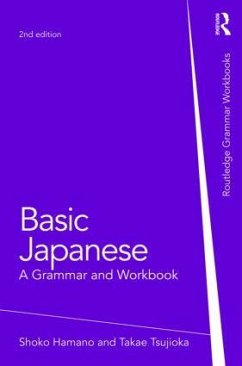
Modern Japanese Grammar Workbook
Versandkostenfrei!
Versandfertig in 1-2 Wochen
65,99 €
inkl. MwSt.
Weitere Ausgaben:

PAYBACK Punkte
33 °P sammeln!
An innovative book of exercises and language tasks for learners of Japanese, it covers essential grammatical structures as well as practice for everyday functions, such as making introductions and expressing needs. All sentences are written in Romanization and the Japanese script.














